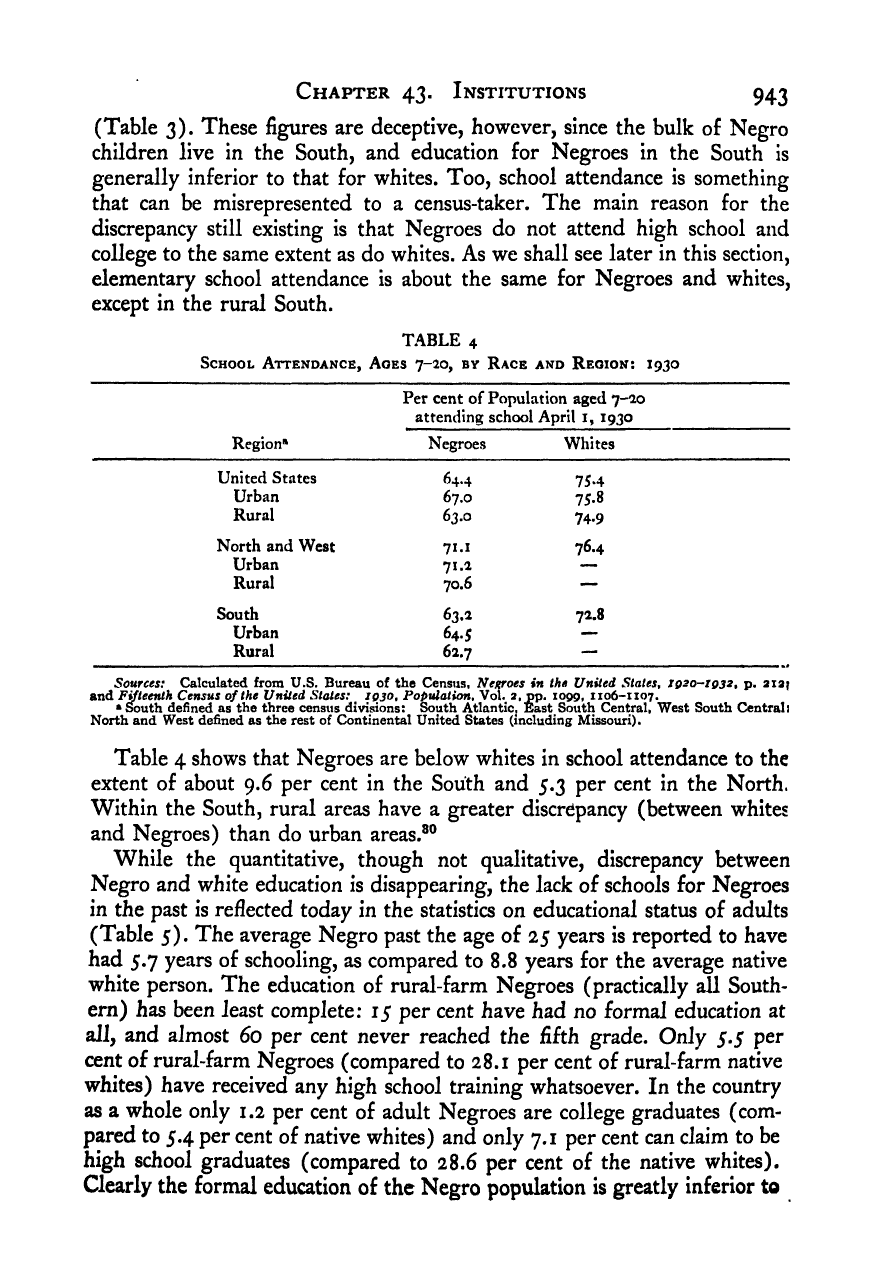Note: Gunnar Myrdal died in 1987, less than 70 years ago. Therefore, this work is protected by copyright, restricting your legal rights to reproduce it. However, you are welcome to view it on screen, as you do now. Read more about copyright.
Full resolution (TIFF) - On this page / på denna sida - X. The Negro Community - 43. Institutions - 4. The Negro School and Negro Education

<< prev. page << föreg. sida << >> nästa sida >> next page >>
Below is the raw OCR text
from the above scanned image.
Do you see an error? Proofread the page now!
Här nedan syns maskintolkade texten från faksimilbilden ovan.
Ser du något fel? Korrekturläs sidan nu!
This page has never been proofread. / Denna sida har aldrig korrekturlästs.
Chapter 43. Institutions 943
(Table 3). These figures are deceptive, however, since the bulk of Negro
children live in the South, and education for Negroes in the South Is
generally inferior to that for whites. Too, school attendance is something
that can be misrepresented to a census-taker. The main reason for the
discrepancy still existing Is that Negroes do not attend high school and
college to the same extent as do whites. As we shall see later in this section,
elementary school attendance is about the same for Negroes and whites,
except in the rural South.
TABLE 4
School Attendance, Ages 7-20, bv Race and Region: 1930
Per cent of Population aged
attending school April i, 1930
Region* Negroes Whites
United States 64.4 75‘4
Urban 67.0 75.8
Rural 63.0 74.9
North and West 71.1 76.4
Urban 71.1
Rural 70.6 —
South 63*2 72.8
Urban 64.5 —
Rural 62.7 —
Sources: Calculated from U.S. Bureau of the Census, Negroes in the United States, 1920-1032, p. 2x27
and Fifteenth Census of the United States:
^
1030, Population, Vol.^ JPP* 1106-1107.
* South defined as the three census divisions: South Atlantic, Bast South Central, West South Central:
North and West defined as the rest of Continental United States (including Missouri).
Table 4 shows that Negroes are below whites in school attendance to the
extent of about 9.6 per cent in the South and 5.3 per cent in the North.
Within the South, rural areas have a greater discrepancy (between whites
and Negroes) than do urban areas.®®
While the quantitative, though not qualitative, discrepancy between
Negro and white education is disappearing, the lack of schools for Negroes
in the past is reflected today in the statistics on educational status of adults
(Table 5). The average Negro past the age of 25 years is reported to have
had 5.7 years of schooling, as compared to 8.8 years for the average native
white person. The education of rural-farm Negroes (practically all South-
ern) has been least complete; 15 per cent have had no formal education at
all, and almost 60 per cent never reached the fifth grade. Only 5.5 per
cent of rural-farm Negroes (compared to 28.1 per cent of rural-farm native
whites) have received any high school training whatsoever. In the country
as a whole only 1.2 per cent of adult Negroes are college graduates (com-
pared to 5.4 per cent of native whites) and only 7.1 per cent can claim to be
high school graduates (compared to 28.6 per cent of the native whites).
Clearly the formal education of the Negro population is greatly inferior to
<< prev. page << föreg. sida << >> nästa sida >> next page >>